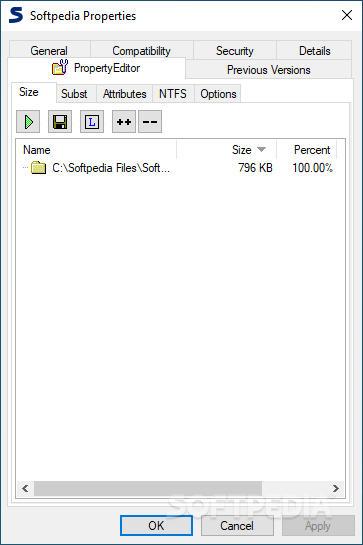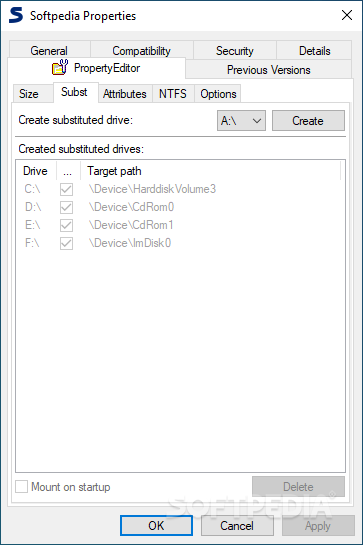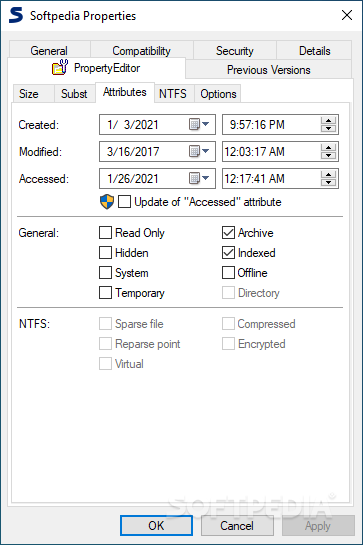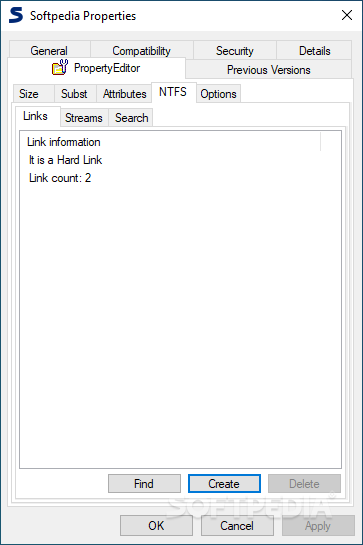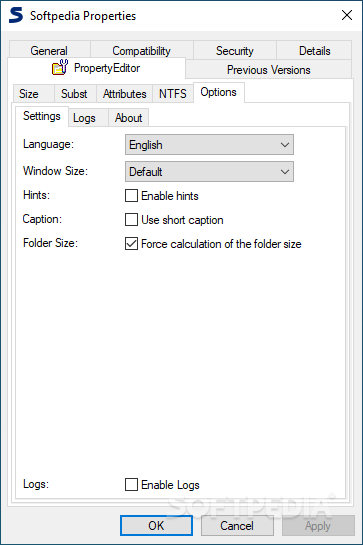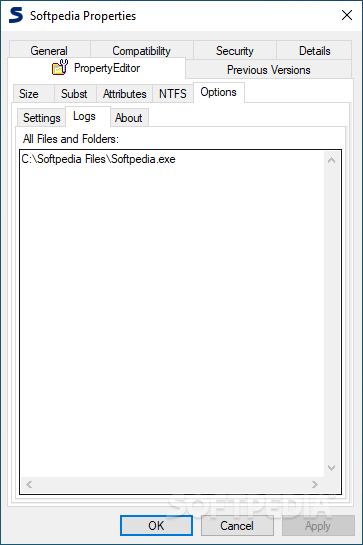
PropertyEditor
5.1.1Modify parameters of files, folders or drives without a lot of hassle, directly from the Properties window, thanks to this Windows shell extension
Despite its name, PropertyEditor does not only allow you to edit the properties of a file in Windows, as you might think at first sight. Instead, it enhances the context menu in Windows by adding extra options to help you get additional information about files, folders and drives, change their icons with ease and configure various NTFS parameters.
You can also change the file attributes and make it read-only, hidden or turn it into a system file or a temporary file. Moreover, you can change it to an archive and toggle the “offline” tag on.
There are also a few NTFS parameters available. PropertyEditor enables you to sparse a file and resparse a point, or toggle the virtual, compressed and encrypted properties on.
Another interesting feature is the possibility to create substituted drives for any selected folder directly from the context menu. The virtual drives you create can be mounted on startup automatically to ease your work.
Working with various NTFS parameters is also possible with PropertyEditor. You get to handle streams, mount points, junctions and hard links, all without requiring a third-party tool.
Shell extension for editing properties
After a brief installation process, you can access PropertyEditor from the “Properties” option in the right-click menu of any file, folder or drive. You will notice new items in the Properties window, which makes it easier for you to update the parameters of the selected item. Since it seamlessly integrates into Windows Explorer, there is no need to get accustomed to a new interface and working environment.What exactly can you do with PropertyEditor?
First, it provides a quick and easy way to change the standard file attributes. To do so, just navigate to the “Attributes” tab, where you can see and modify the timestamp of a file or a folder (the date of creation, of the last access and the time of the last modification).You can also change the file attributes and make it read-only, hidden or turn it into a system file or a temporary file. Moreover, you can change it to an archive and toggle the “offline” tag on.
There are also a few NTFS parameters available. PropertyEditor enables you to sparse a file and resparse a point, or toggle the virtual, compressed and encrypted properties on.
Create substituted drives and change NTFS parameters
PropertyEditor provides relevant information about the contents of a folder or a drive, their size and how much of the total available space they occupy. The Size tab provides a detailed report about this, which can be saved locally for further comparison and reference.Another interesting feature is the possibility to create substituted drives for any selected folder directly from the context menu. The virtual drives you create can be mounted on startup automatically to ease your work.
Working with various NTFS parameters is also possible with PropertyEditor. You get to handle streams, mount points, junctions and hard links, all without requiring a third-party tool.
More than an attribute changer
PropertyEditor brings to the table much more than a simple attribute changer. It provides relevant information about the contents of a drive or a folder, and it allows you to tamper with the features of the NTFS file system. It is a powerful tool in the hands of an advanced user, making routine operations related to file and folder management much easier to carry out.9.7 MB
Info
Update Date
Jan 28 2021
Version
5.1.1
License
Trial
Created By
UsefulSoft
Related software System
